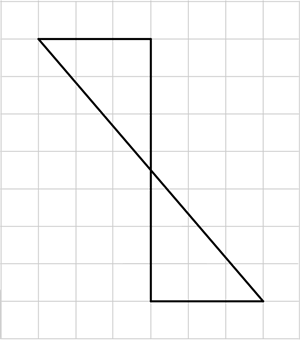UPSKILL MATH PLUS
Learn Mathematics through our AI based learning portal with the support of our Academic Experts!
Learn moreLet us learn how to find the area of the given shape by counting the number of squares in the graph.
We know that certain shapes do not fit exactly into the square boxes(area) in the graph. Hence, there are certain rules to determine the area of the shape. They are:
- The area of \(1\) full square can be taken as \(1\) \(sq. \ unit\).
- If the region covers more than half the square, then the area can be considered as \(1\) \(sq. \ unit\).
- If the region covers less than half the square, then that region is neglected.
- If the region covers exactly half the square, then the area is taken as \(\frac{1}{2}\) \(sq. \ unit\).
These are the conventions that are needed to have in mind while finding the area of the shape from the graph.
Example:
Find the area of the given shape by counting the squares.

Solution:
Let us count the number of squares.
Number of fully-filled squares \(= 6\)
Area of fully-filled squares \(= 6 \times 1\)\(= 6 \ sq. \ cm\)
Number of half-filled squares \(= 2\)
Area of half-filled squares \(= 2 \times \frac{1}{2}\)\(= 1 \ sq. \ cm\)
Number of more than half-filled squares \(= 4\)
Area of more than half-filled squares \(= 4 \times 1\)\(= 4 \ sq. \ cm\)
Number of less than half-filled squares \(= 2\)
Area of less than half-filled squares can be neglected.
Total area covered by the given shape \(= (6 + 1 + 4)\)\(cm\)\(= 11\) \(sq. \ cm\)
Therefore, the total area covered by the given shape is \(11\) \(sq. \ cm\).